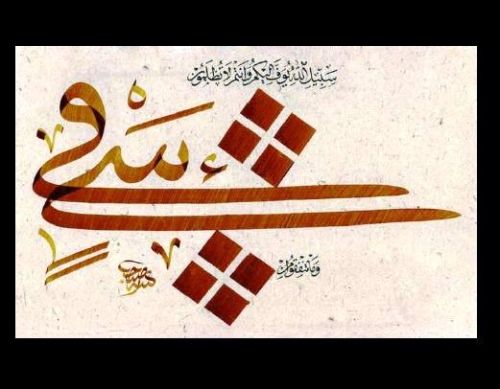Sabah Arbilli takes time to sit with each piece of his art — it is a source of beauty for him. Arbilli was born in Iraq and studied Masters in Visual Arts, at the University of Wales. He is currently based in the UK and Qatar. But, his love of calligraphy began early, as a young student in Iraq.
Arbilli became a master of traditional calligraphy, but he has a way of expressing the traditional in unique new ways, whether that is on mediums such as paint or sculpture. The foundations, for Arbilli, is still the traditional teachings of reed pen on paper.
Calligraphic sculpture in Qatar by Sabah Arbilli
Recently, Arbilli has contributed a sculpture to Qatar National Day, a poem by Sheikh Jassim bin Mohammed Al Thani, the founder of Qatar. The statue measures close to 25 feet (7.5 meters high). Arbilli's work has been displayed as a permanent piece for the opening of the Islamic Museum of Australia and the United Nations. His traditional calligraphy has won many accolades and he has been invited as an expert advisor and consultant in the world of calligraphy. Arbilli’s works can be found in the Middle East and Internationally in many private collections, and architectural buildings.
I had the unique opportunity to interview Sabah Arbilli recently, which follows.
1. What inspired you to study traditional arts?
As a child I was fascinated with letter formation during my school days in Iraq. My academic qualification is in civil engineering, but I have always admired the beauty in calligraphic letters. This led to writing from my an early age. It was a form of meditation and engagement with beauty in each formation. So indirectly I started to study the art of calligraphy.
2. How is calligraphy different from the other arts that you know?
As an artist I only engage with calligraphy and understand its concepts, principles, styles and etc. All art forms express and emphasize beauty in their own way. What’s different about calligraphy is that it has rules — it’s a skill that one has to know. One can express this in a modern contemporary style, but one cannot break the traditional rules required in the formation of letters.
3. You are an award-winning internationally recognized artist. What do you like the most about your job and why?
I don’t see my art as a job, it is my passion. I live my life enjoying the work that I do and love. I enjoy creating and making and I get inspired by seeing my audience engage with the art work. I create and make it complete. Each piece I make is like giving birth to a child. When I see my work displayed and showcased around the world I feel very honored to represent a traditional form and art. It allows others to see creativity and engage with the traditional art.
4. How do you come up with your compositions? What is the process?
I have to have, a theme, a title or text some idea and inspiration to start the process from this the work starts execution. The ideas merge into a development of color composition and style of a painting.
I connect with the work and this normally has a process when I start and work on one layer and then build up, as the work starts the development is spontaneous. As an artist, I know when a piece is a complete when I am able to put my brush down and see it as a complete piece.
5. Your advice for students who are getting started in the arts.
To make sure this is what you want and that you can make a livelihood out of it. You have to be committed to art as it comes from within and you must really enjoy what you do.
For more information on Sabah Arbilli's work, visit his Instagram page: https://www.instagram.com/sabaharbilli_art/
Gallery of Sabah Arbilli's work:








